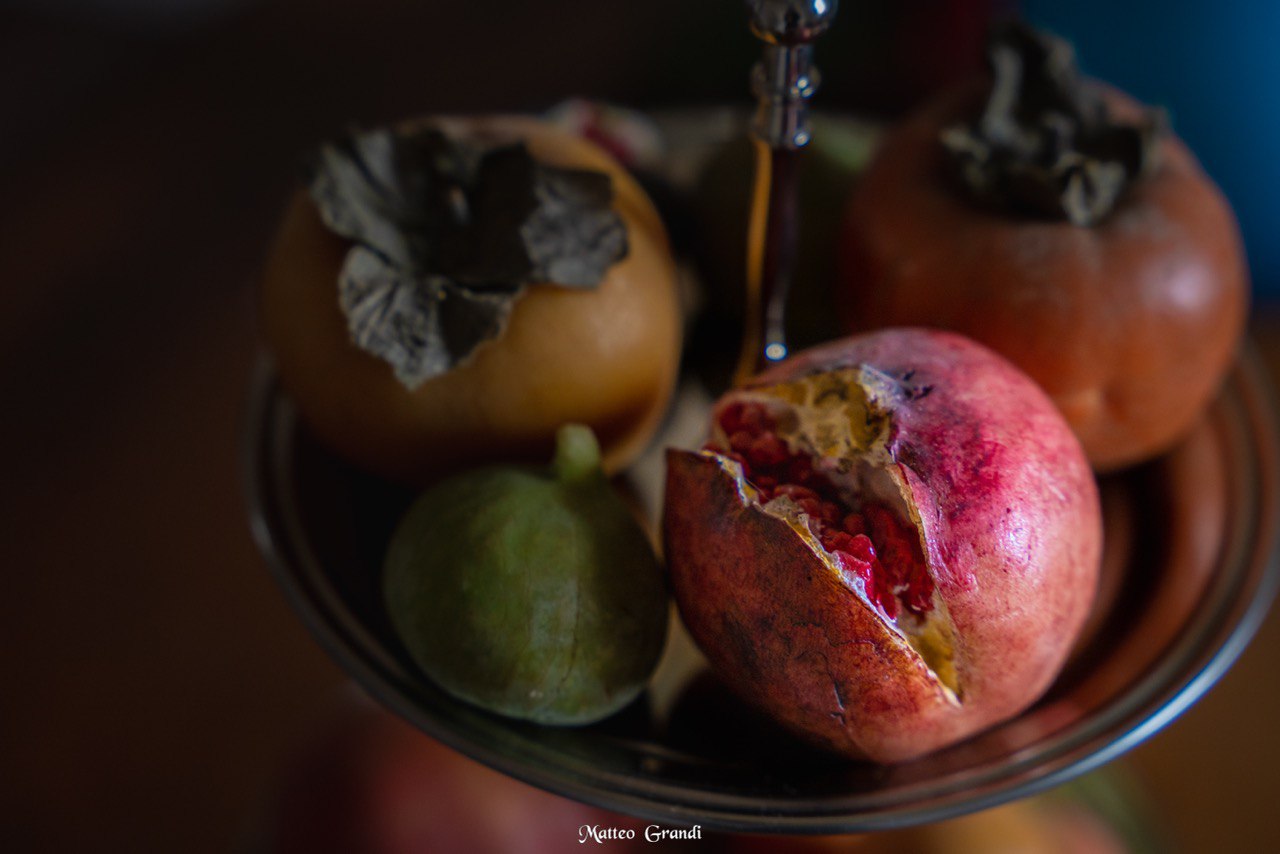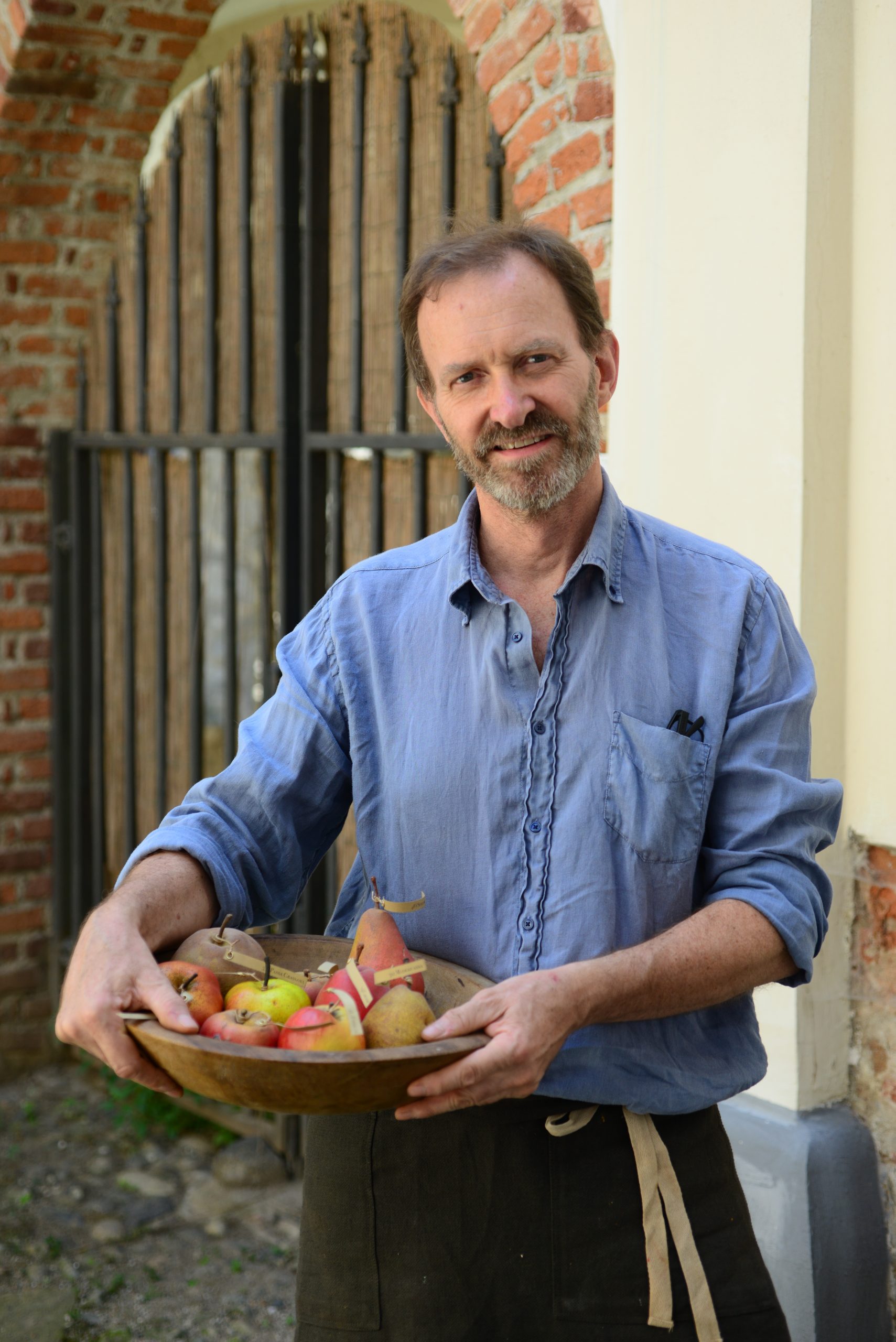
Davide Furno and the art of wax, between magic and hyperrealism
Davide Furno is a true master of wax.
He was the first in Italy to give new life and dignity to wax modeling, thus recovering an ancient and completely forgotten technique: this is a discipline that, with the help of waxes, natural resins, plasters and powders, gives life to flowers and fruit, that can be combined into extraordinary compositions. With this process, and thanks to secret recipes he learned during years of study, research and experimentation, Davide Furno is able to create true masterpieces of still life, refined and hyper-realistic, which make any environment magical and poetic.
What was your career path and how did you start doing this job?
I wasn’t the perfect student when I was attending school, but for art history, drawing and applied arts, I always made an exception.
Then, after graduating at high school and at the IED (European Institute of Design), I worked for several years as a graphic designer and illustrator, experimenting with drawing and with different decorative techniques, such as gilding, trompe l’oeil and faux marble, among others.
During this time of tireless research, I came across wax modelling by chance – and it couldn’t be otherwise, since at the time it was an unknown process – and in particular I discovered the collection of wax fruits by Francesco Garnier Valletti, which was basically forgotten on the shelves of the Faculty of Agriculture of the University of Turin: hundreds of wax fruits of breathtaking beauty, made with a technique which was considered lost forever.
I am lucky enough to remember very well the moment I fell in love with what was to become my work for the rest of my life. But it would still take many years, spent between researching and experimenting recipes and materials, wandering between fairs and markets, and going through failures and recoveries, to make of this passion a real job.
Your works are true masterpieces of still life. How much time and how much practice did it take to get to this result?
It is not easy to calculate the necessary time and practice, as both have blurred boundaries. Being a discarded and forgotten technique, I had no one to teach me. The output I have reached is the result of a few recipes that I found or created, by matching rare notes and ancient manuals, as well as a lot of self-taught experimentation, which still continues. I can say precisely when I started working with wax, but the preparation of the plaster casts, the study of the colors and their preparation, the practice with resins, organic materials and glues, all started many years earlier. In this process I wasn’t realizing that I was accumulating experience and knowledge, that would be useful in the development of the technique of wax modelling.
To answer the question, I would say that it took a few years from the moment I casted my first apple, which actually looked more like a burnt tuber, to the moment I obtained a recognizable fruit with the correct recipe by Garnier Valletti. The time I spent in this process was necessary to experiment and confirm the accuracy of the procedure, often more than anything else. From then on, it was above all a question of improving my works and the aesthetic result, but I think this is the natural inclination of any craftsman.
Who are the clients of your works and what has been the most interesting work you have done so far?
Incredibly, even with a time jump of two centuries in which wax modeling was disappeared, my client is exactly the same one that a master wax modeler would serve two hundred years ago, obviously with the natural differences between the two eras: concerning the decorative elements and the compositions such as centerpieces, my clients are usually furniture shops, interior designers and private individuals; while for the “pomone” (i.e. collections of fruit replicas) I have requests above all from museums and botanical gardens, universities, and collectors.
I have often received exciting commissions from museums and important exhibitions, but if I had to choose the one that still satisfies and excites me the most, it is when the collector sends me his own fruit to reproduce. Often, these are plants owned and cared for by loved ones, or ancient rediscovered varieties, many times linked to particular memories.
How many hours of work does it take to make a piece and what is the procedure?
Among the techniques I use, the one by Francesco Garnier Valletti is certainly the most characteristic and complex one, as well as the technique that best represents me, having rediscovered it personally.
Having to be exhibited on the shelves of a museum, durability is one of the prerogatives of the object, and this is not exactly a characteristic of wax.
To get a durable object in wax, the base mixture must be worked for a long time and cooked for hours in very precise conditions, until you get a result somewhat similar to terracotta. At this point, however, the material has lost basically all the characteristics of wax, such as shine and translucency, and it looks dark brown and opaque instead.
The mixture must therefore be treated like a common pictorial background and prepared, with a few coats of white priming, a subsequent glaze with resin colors, which I necessarily have to prepare personally.
Given this long premise, and considering that each fruit has different coats of glaze, it is easy to understand how the time needed to make a fruit is no less than a few months, depending on whether you work in summer or winter, in a dry or humid environment, and so on.
Have you ever thought of teaching this rare and little-known technique?
Of course I have thought about it, and sometimes I have even tried it, with children, friends and enthusiasts.
But the lessons didn’t last long: they all ran away pretty quickly, I don’t know if it was disappointment for the result, the fatigue or my temper!
Seriously, I’m definitely going to pass this knowledge down sooner or later. But since it is not a simple job at the moment, with few professional opportunities, it is difficult and perhaps not even fair to involve a young person as an apprentice.
I mean that I am still thinking about it and how to do it. In the future, a solution could be to collaborate with craft schools, which certainly have more resources than me.
How do you combine tradition and innovation in your work?
It’s difficult to talk about innovation in a profession as tied to the past as mine, but there is still room for renovation.
From a technical point of view, let’s say that over time I have been able to renew classic recipes, making them more up-to-date and ethically acceptable, for example by eliminating toxic paints and pigments, which were once used without concerns, or unavailable ingredients such as whale fat, and replacing them with resins, waxes and other organic materials.
Today I am able to offer both historical recipes and personally created blends, which are probably, depending on the case, more resistant and plausible.
From an aesthetic point of view then, it is trivial to talk about the actualization of taste. Today, proposing cornucopias and triumphs of fruit can be surprising at an exhibition, but then you have to be really lucky to be able to sell it.
In 2022 you got the “MAM – Maestro d’Arte e Mestiere” title, assigned by the Cologni Foundation to master craftspeople. What did it mean for you?
I will not deny that, if on the one hand it was a wonderful satisfaction that I badly needed, on the other hand I feel, the responsibility of that.
I mean that in addition to having felt awe towards the audience and the other awarded masters – since the level of talent and excellence was such as to intimidate anyone – the fact of having reached the top so quickly, makes me fear of not being able to make the most of all the opportunities that are offered to me.
In any case, for me this has been an enormous stimulus to carry out all the projects I have in the pipeline, and perhaps this is just the right time to carry them out.
What are your future projects?
For a year now I have been dedicating myself to two large-scale works: the first is the re-edition with the ceroplastic technique of a first part of the Gallesio pomona. The second is the creation of a collection of grapes, certainly the most complex, difficult and extraordinarily beautiful fruit of all achievable with the Garnier Valletti technique.
These are very demanding and somewhat presumptuous undertakings, but the extraordinary year that was 2022, with the recognitions I gained from “Fatti ad Arte” – with the “Maestro di Mestiere” Award – and the title of “MAM – Maestro d’Arte e Mestiere”, gave me somehow the courage to try.
Davide Furno
Salita di Riva, 6 – Biella
info@davidefurno.it
Ph. +39 345.6273518
www.davidefurno.it







